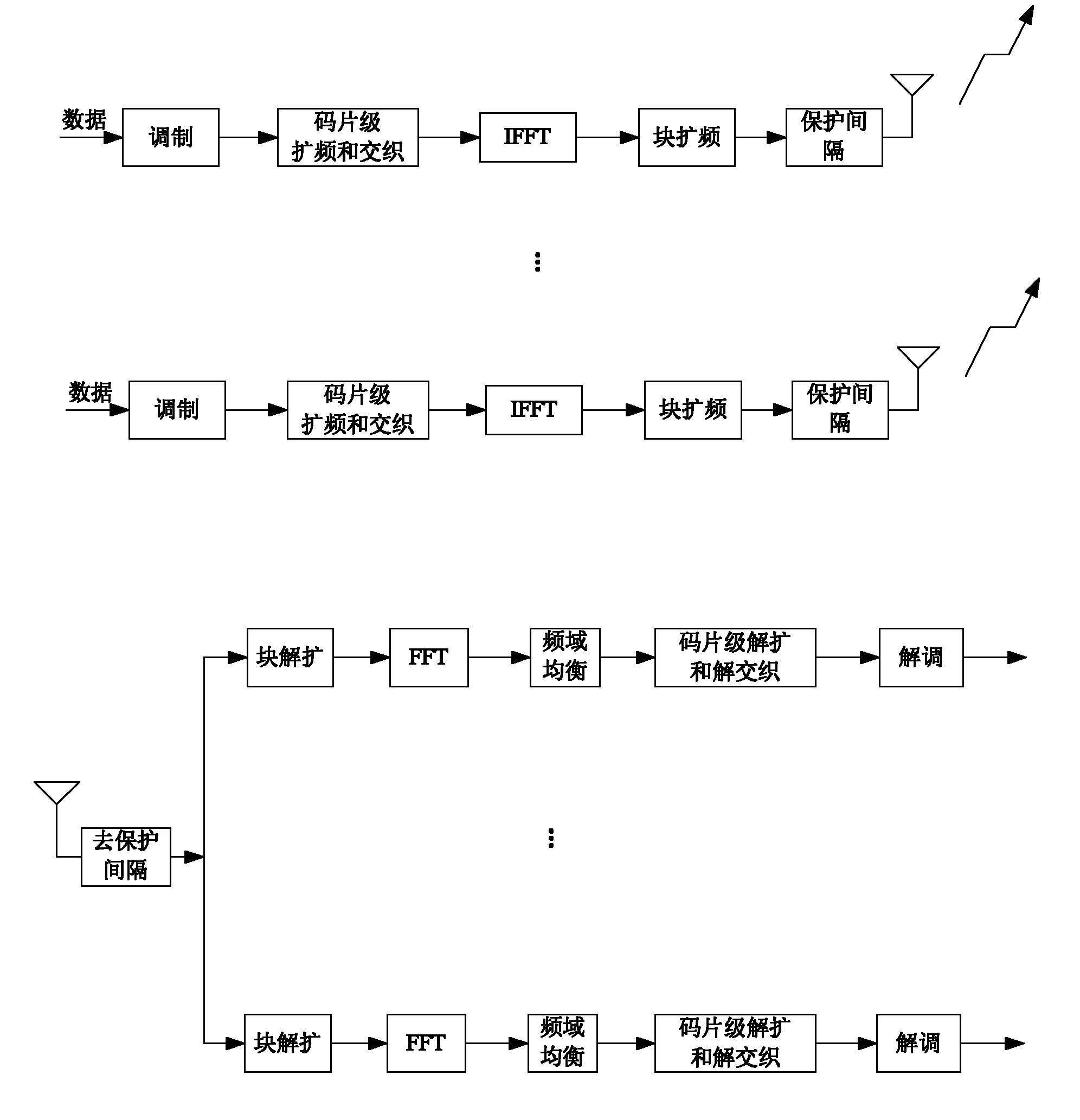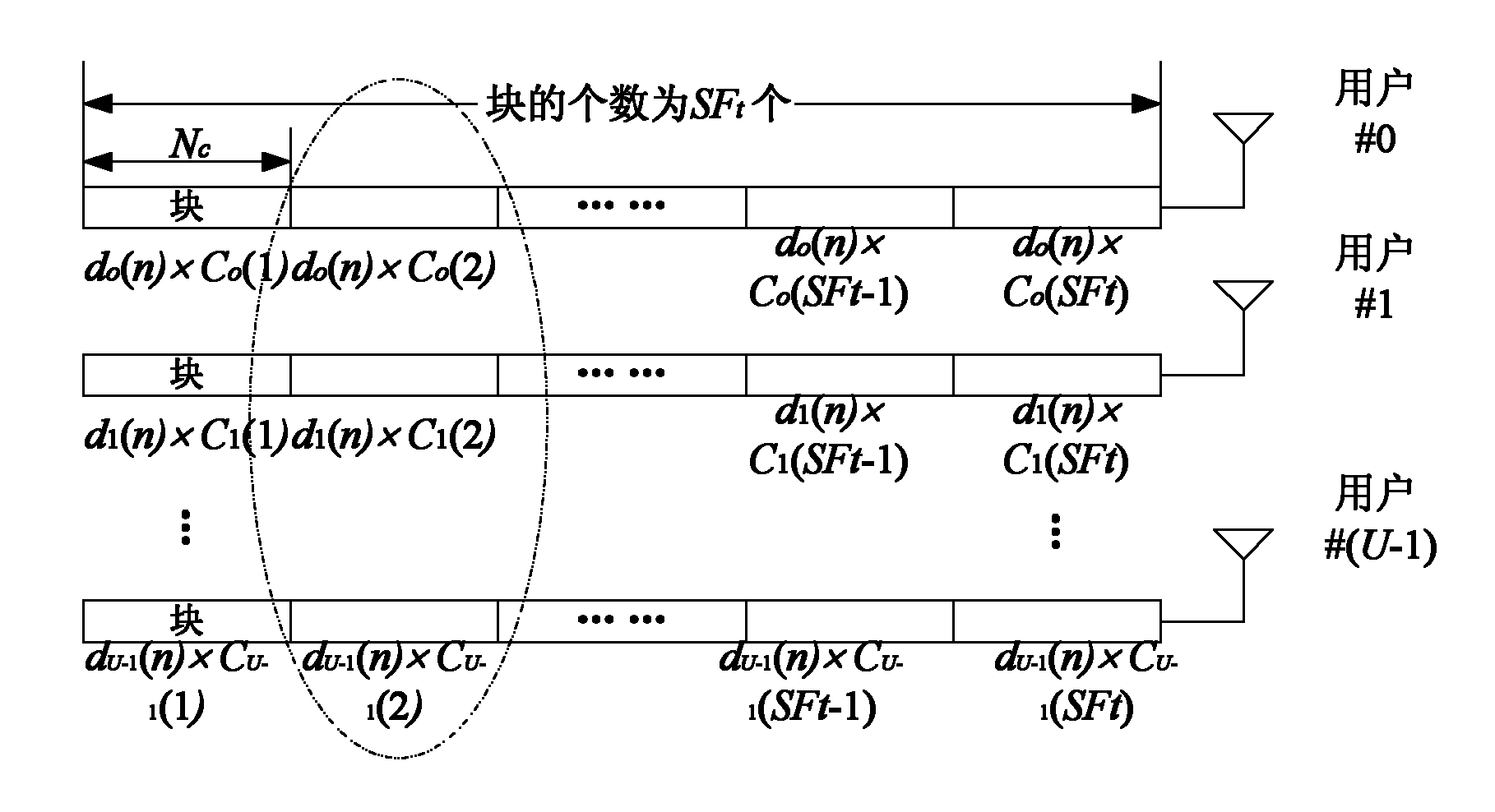Method for inhibiting residual multi-user interference in two-dimensional block spread spectrum system based on parallel interference cancellation and iterative detection
A multi-user interference and iterative detection technology, applied in the field of residual multi-user interference suppression, can solve problems such as interference and residual multi-user in two-dimensional block spread spectrum system, achieve good bit error rate (BER) performance, and improve residual multi-user interference effect
- Summary
- Abstract
- Description
- Claims
- Application Information
AI Technical Summary
Problems solved by technology
Method used
Image
Examples
specific Embodiment approach 1
[0074] Specific implementation mode one: the following combination Figure 4 This embodiment is described. This embodiment is based on the residual multi-user interference suppression method in the two-dimensional block spread spectrum system based on parallel interference cancellation and iterative detection. Under the SC-CDMA system:
[0075] Launch process:
[0076] Step 1, respectively performing chip-level spread spectrum on the U-channel modulated signal to obtain the signal after U-channel chip-level spread spectrum;
[0077] Step 2, carry out block spread spectrum respectively to the signal after U chip-level spread spectrum obtained in step 1, obtain the signal after U block spread spectrum;
[0078] Step 3, adding the U-channel block-spread signals obtained in step 2 into guard interval processing respectively, obtaining the processed U-channel signal, and transmitting to the channel through the transmitting antenna;
[0079] Receiving process:
[0080] Step 4, us...
specific Embodiment approach 2
[0092] Specific implementation mode two: the following combination Figure 5 Describe this embodiment, this embodiment is based on the residual multi-user interference suppression method in the two-dimensional block spread spectrum system of parallel interference cancellation and iterative detection, under the MC-CDMA system:
[0093] Launch process:
[0094] Step 1. Carry out chip-level spreading and interleaving of U-channel modulated signals respectively, to obtain signals after U-channel chip-level spreading;
[0095] Step 2, performing inverse fast Fourier transform on the U-channel chip-level spread-spectrum signal obtained in step 1, respectively, to obtain the time-domain signal after the U-channel transform;
[0096] Step 3, performing block spread spectrum respectively on the time-domain signal after U channel transformation obtained in step 2, to obtain the signal after U channel block spread spectrum;
[0097] Step 4, add the U-channel block-spread signals obtain...
specific Embodiment approach 3
[0112] Specific implementation mode three: the following combination Figure 6 This embodiment is described. This embodiment is based on the residual multi-user interference suppression method in the two-dimensional block spread spectrum system based on parallel interference cancellation and iterative detection. Under the SC-CDMA system:
[0113] Launch process:
[0114] Step 1, respectively performing chip-level spread spectrum on the U-channel modulated signal to obtain the signal after U-channel chip-level spread spectrum;
[0115] Step 2, carry out block spread spectrum respectively to the signal after U chip-level spread spectrum obtained in step 1, obtain the signal after U block spread spectrum;
[0116] Step 3, adding the U-channel block-spread signals obtained in step 2 into guard interval processing respectively, obtaining the processed U-channel signal, and transmitting to the channel through the transmitting antenna;
[0117] Receiving process:
[0118]Step 4, u...
PUM
 Login to View More
Login to View More Abstract
Description
Claims
Application Information
 Login to View More
Login to View More - R&D
- Intellectual Property
- Life Sciences
- Materials
- Tech Scout
- Unparalleled Data Quality
- Higher Quality Content
- 60% Fewer Hallucinations
Browse by: Latest US Patents, China's latest patents, Technical Efficacy Thesaurus, Application Domain, Technology Topic, Popular Technical Reports.
© 2025 PatSnap. All rights reserved.Legal|Privacy policy|Modern Slavery Act Transparency Statement|Sitemap|About US| Contact US: help@patsnap.com



